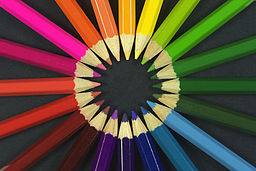Everyone knows a true conservative’s investment portfolio should look about like this:
- 10% long term CDs
- 50% gold coins bought from reputable cable news advertisers
- 20% cash stuffed under a Smith & Wesson-protected mattress
- 10% firearms, antique swords and other Pawn Star-grade investment vehicles
- 10% patriotic, Christian and/or Elvis-themed display plates and similar collectibles
Fewer people, however, know that gold, popular though it may be, is no longer the fairest maiden in the land of precious metals. Sure, it’s had a good run. But as much as it pains me to say it, gold is old. It will probably provide some good returns for the time being, but do you want good returns, or do you want great returns? Do you want to be somewhat prepared for the coming economic collapse, or do you want an impenetrable financial fortress to rival your actual impenetrable fortress in rural Montana?
That’s what I thought. So what is this miraculous metal poised to give investors historic, unprecedented, Biblically-proportioned returns in the comings years? Is it platinum? Gold-pressed latinum? Unobtainium? No, no and no. As you’ve no doubt cleverly deduced from the title of this article, it’s a well-known but little-discussed precious metal called rhodium.
Rhodium, or as savvy investors often refer to it: the cobalt of kings, is the most valuable investment grade metal in the world. In fact, so valuable is rhodium that scientists actually refer to it as a “noble” metal, presumably because in times past only nobles could hope to invest in something so precious. During the first wave of America’s entitlement-fueled economic apocalypse beginning after the “election” of “president” Obama in 2008, the price of rhodium soared to over $10,000 per oz. To put that in perspective, gold, the investment choice of kings since time immemorial and probably the original noble metal, barely made it past $1,900 per oz during that same period. With rhodium now back down to below $2,000 per oz—and, more importantly, with the fat cats on Wall Street and those clowns in Washington thinking our economic problems have blown over—the time has never been more ripe for filling up your coffers with precious rhodium.
What kind of returns can investors expect? That’s a good question. No one can know for certain, of course, but odds are it’s going up…way up. During the inevitable second wave of economic collapse, some experts predict rhodium will reach prices exceeding $20,000 per oz. If you bought in now, that could mean a return on your investment of more than 1,000%! Good luck getting that kind of a return gambling your hard-earned savings in a rigged casino game like the stock market.
So how the heck did rhodium get so valuable in the first place? That’s a smart question, so I’m going to give you the smart answer. But hold on. It gets a little complicated, and I’m going to use a couple terms of art. Don’t be intimidated, though. If you weren’t smart enough to do this, you wouldn’t have read this far.
See, the beauty of rhodium is that it possesses something savvy investment professionals and financial gurus call “intrinsic value.” That’s just a fancy way of saying that besides being rare, precious and highly sought after, rhodium also has real life, practical uses. Consider your prized AR-15 or replica medieval battle hammer. They’re not just works of art you keep over the mantle and could sell for a lot of cash. They’re also tools that can be used to defend your land. That’s intrinsic value.
What are these practical uses for rhodium, you ask? Well, do you have a catalytic converter in your car? If so, chances are it’s made with rhodium. Now think about this for a second: when most of the world is living in a post-apocalyptic, Mad Max-style wasteland the lie-beral agenda bought us, people are still going to need cars, right? And if there are cars, there are going to be catalytic converters, aren’t there? You know what else that means? Yup. It means there’s going to be high demand for good, old-fashioned rhodium, which will be even rarer since mines will probably be out of business or converted to producing nothing but overpriced, “green” light bulbs. That’s why you can count on rhodium.
Compare this to the so-called “money” that printing press we call the Federal Reserve puts out. Unless there’s a toilet paper shortage, that stuff has no intrinsic value. Like Monopoly money, it’s only valuable because our government says that’s a part of the game and people blindly follow. It’s what economists called a “fiat currency,” which is the opposite of one that has intrinsic value. You may have heard the term fiat before. No, not the car. I’m talking about ruling by fiat. It’s kind of order made by dictators like Benito Mussolini, his pal Adolf Hitler and our current president/emperor. Yeah, scary as it sounds, America’s whole financial system is based on the techniques of Mussolini and Hitler. Nice, huh?
Okay, okay. So you’re convinced. The question still remains: how much rhodium should you buy? Well, that’s somewhat a matter of personal preference, of course. Really, the question is how rich you want to get. Personally, I would put 100% of my investments into rhodium. However, I recognize that would be a big change and maybe you don’t have the guts for the huge profits that come from America’s safest, most reliable, most intrinsically valuable investment. If that’s the case, might I recommend this: switch out half your current portfolio with rhodium, just to give a shot. Give it a year. Once you realize it’s safe, then maybe switch out the rest of your portfolio, or at least sell the rest of your gold and replace it with good, ol’ rhodium. Sound reasonable?



